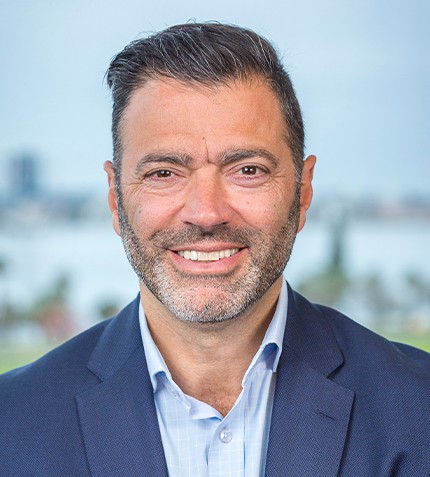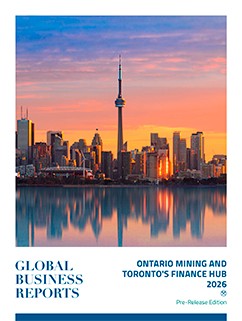
"I believe that Québec is the best jurisdiction in the world for mining exploration… In terms of fiscal incentives, there is no match in Canada. You can get more work done for each dollar spent than anywhere else in the country."
Mathieu Savard
CHAIRMAN OF THE BOARD, QUÉBEC MINERAL EXPLORATION ASSOCIATION (AEMQ)
What was the impact of the pandemic over the 2020 figures for the exploration industry?
Overall, 2020 was not a bad year despite the challenges. The exploration segment had to stop between March and May 2020, and mining companies had to be quite cautious with the pandemic applying a number of protocols to protect staff and the communities around the projects. Despite that, 2020 exploration expenditures could be even higher than the C$500 million spent in 2019, due to the high gold price and the fact that companies could raise a significant amount of capital. Moreover, the Québec government extended the flow-through expenditures program for at least a year, and also extended the duration of concessions until April 2021, which helped the sector.
How does Québec rank as an attractive jurisdiction for mining and exploration investment, and do you expect the 2021 election to have an impact on the mining industry?
I believe that Québec is the best jurisdiction in the world for mining exploration. In the last Fraser Institute survey, Québec ranked as the sixth best jurisdiction worldwide. In terms of fiscal incentives, there is no match in Canada. You can get more work done for each dollar spent than anywhere else in the country. Québec also has a fantastic database of geological information, with all legacy data available to any interested parties. The province offers a high level of certainty for investors, with a stable regulatory framework, despite the recent passage of environmental regulations. With regard to the election, historically these processes have not had a deep impact on the industry. The big issue in the political arena right now is how to manage the pandemic.
Gold typically takes the spotlight, but do you expect other metals to raise more interest in the province?
We have seen huge consolidation by a few players in the Abitibi, which has reset the clock in the district. Companies now manage a large chunk of concessions in a systematic manner. This said, we are still seeing some new discoveries, especially in the areas that have been underexplored. We see Canadian Malartic announcing the Odyssey project, while there is also a lot of activity east of Detour with Walbridge Mining. Wesdome Mining is working to restart the Kiena mine, and a lot of different players are becoming active. The more exploration you conduct, the more likely the industry is to come up with a significant discovery, generating a domino effect.
Exploration expenditures reflect the increase of gold price last year, but the infrastructure programs by governments are also helping an increase of base metal prices. We should also see a push into strategic minerals exploration due to the legislative efforts by the U.S. and Canadian governments to secure these metals for the green economy. In the last budget, Québec put together some fiscal incentives to add value to these commodities. Beyond Québec’s traditional exploration areas – the Abitibi Greenstone belt, the James Bay, and the Labrador Trough, we will also see new areas opening up for critical and strategic minerals.
What are the main challenges for the exploration sector in Québec?
In 2021 we should still see expenditures well above the C$500 million, so the challenge for the industry is not on the financing side, but on the manpower side. It is actually a problem all across Canada: a lack of drilling staff and delays to obtain lab results – these issues have worsened with the pandemic. The industry and the government need to plan for the future generation of workers, along with the incorporation of automation and new technologies.
Access to territory is key for our industry and you cannot take that for granted. We are working closely with the government because that challenge, together with the pandemic, has made things more difficult recently. Regarding the pandemic itself, I believe that the industry could use its resource to support the government in its vaccination efforts in certain areas.
How are new technologies changing the way exploration is conducted, and how can the industry incorporate more workers from the Cree community?
The real impact of new technologies in exploration will be on data acquisition and processing – the quality of data, the amount of data, and how you understand that information in the age of artificial intelligence.
In terms of Cree participation, in March 2020 the Québec government signed an agreement with the Cree Nation called the ‘Grande Alliance’. It is a development initiative to invest C$5 billion over 30 years in infrastructure projects in the north of the province. As part of this, there is a railroad reaching the northernmost Cree community. These infrastructure projects should help develop more mining projects and a closer interaction between the industry and the Cree.










